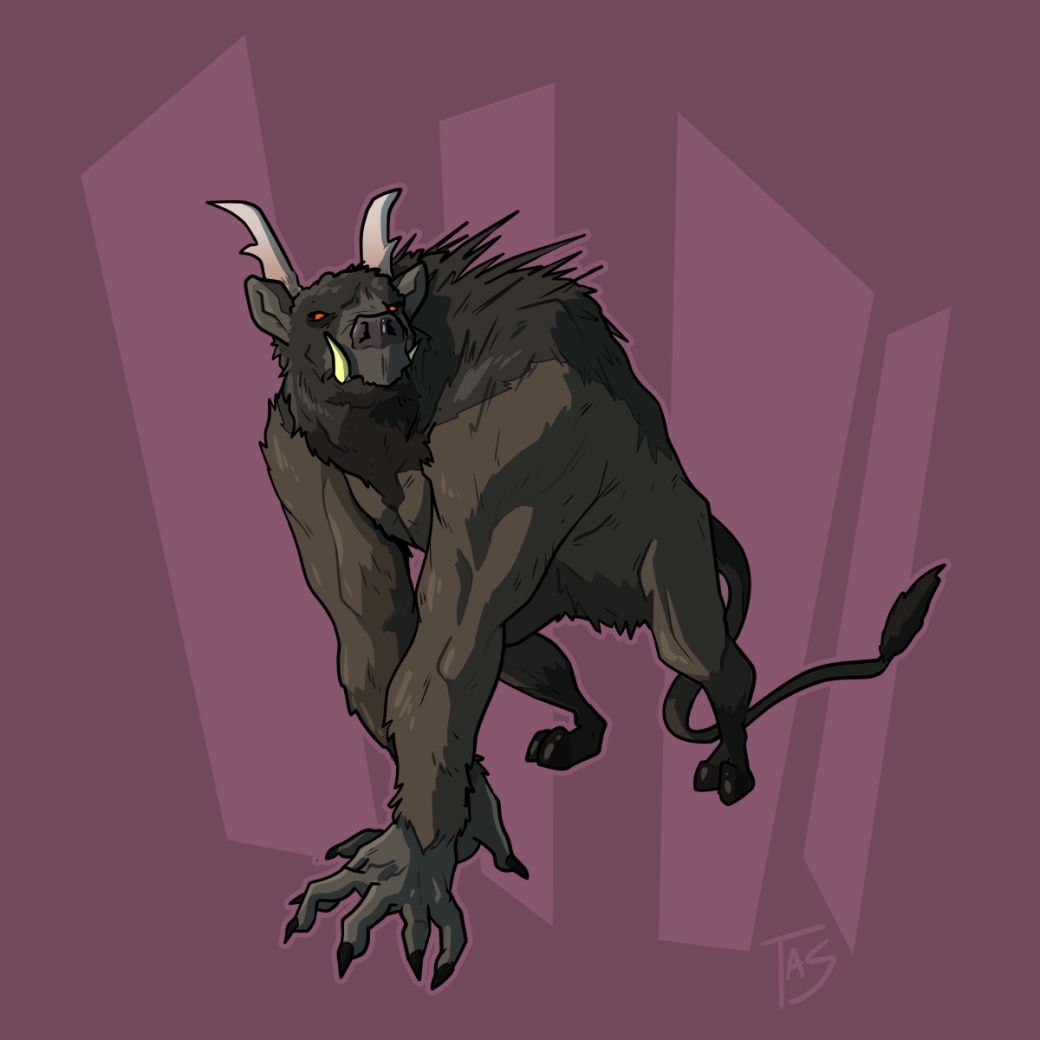
Rakshasa
Region of origin: India
Alternatively a class of demons or nature spirits in Hindu and Buddhist mythology, the male Rakshasa and female Rakshasi are not as a species considered universally evil but are primarily known for their bloodthirsty behavior and tendency to eat human flesh. They were believed to have been accidentally created by Brahma in his sleep, and immediately attacked the god as he slept, resulting in their banishment to the Earth. The Rakshasa were depicted as large, bestial humanoids with long curling fangs and horns, but as they grew in power and age they may develop extra heads and arms, such as their king Ravana, who had ten heads and twenty arms. The Rakshasa were powerful warriors skilled in forms of armed combat and magics such as illusion and shapeshifting. They were often used in stories as threats for a hero to overcome and armies of Rakshasa were said to feast on their victims on the battlefield as they pushed forward, but some were depicted as heroic and aided the various protagonists in vanquishing whatever evil they faced.









